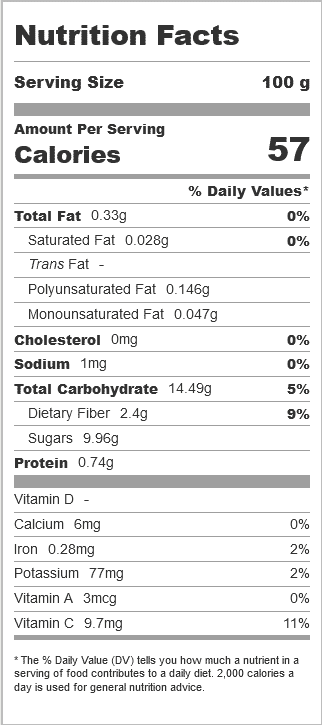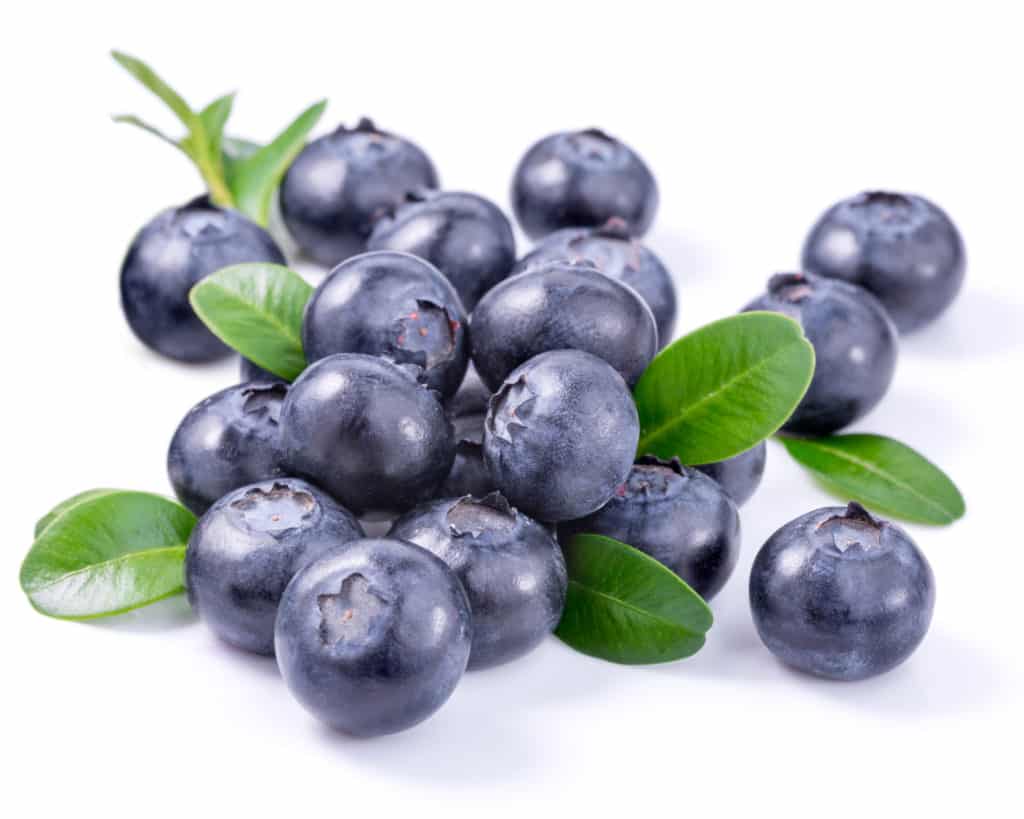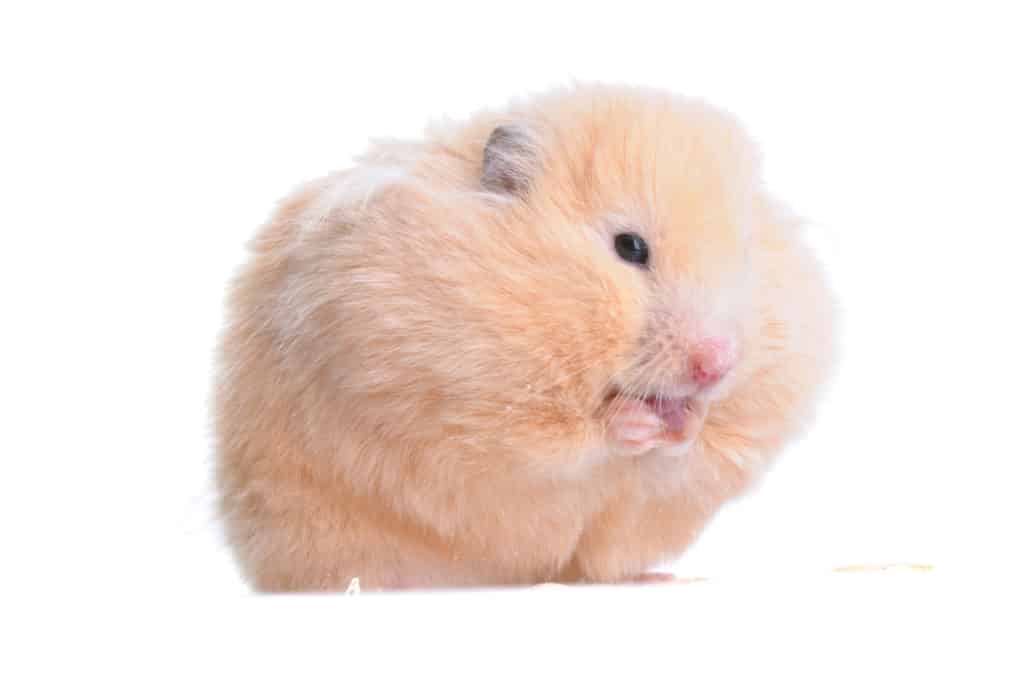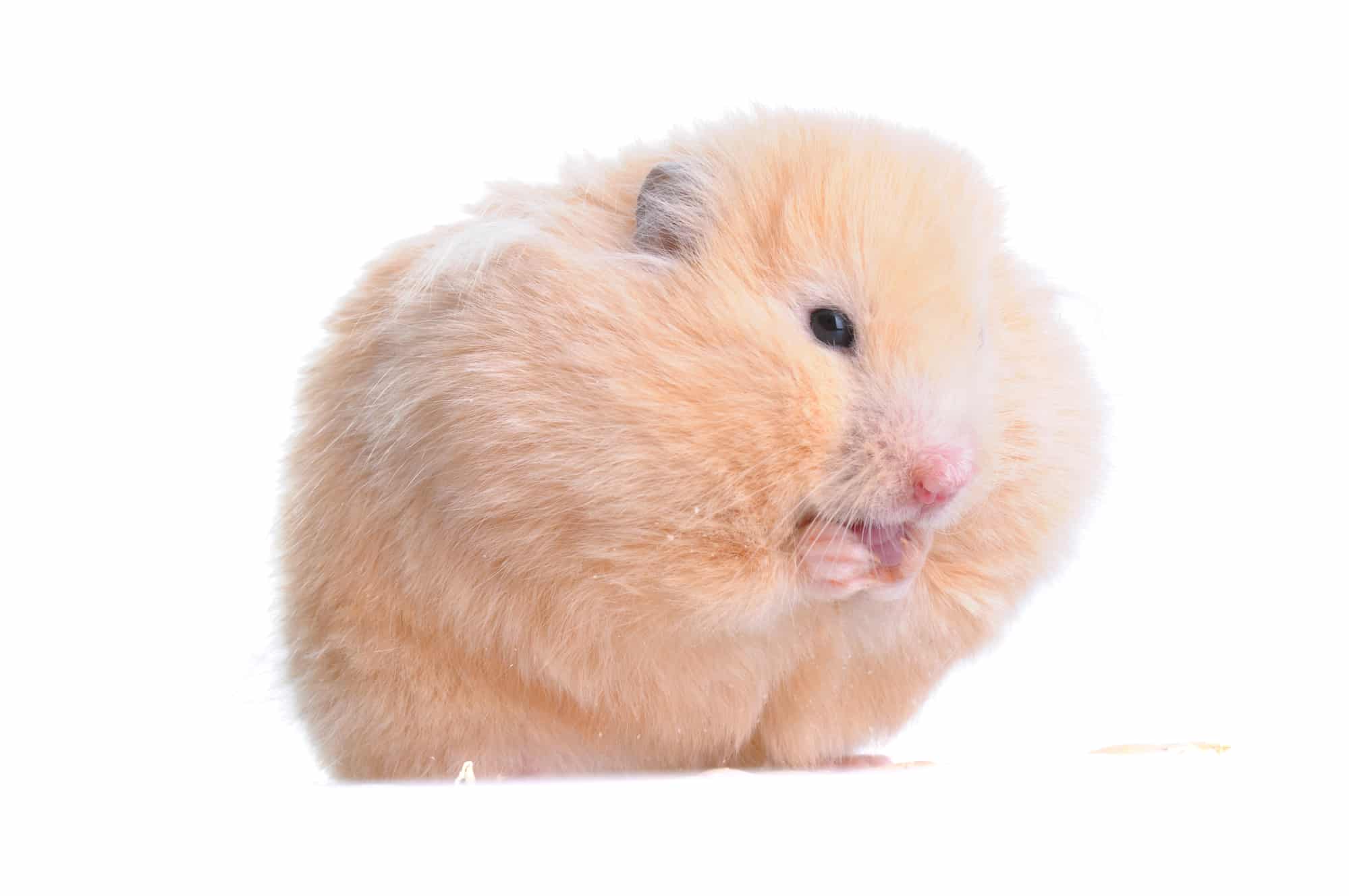Fresh blueberries are a great treat to enjoy in summer. Their taste has conquered millions of people around the world. But they are not just tasty; they are healthy as well. So, if you like blueberries, you might be tempted to give them to your hamster as well. But do you know if blueberries are healthy for hamsters? Can hamsters eat blueberries in the first place? If so, how much can they eat? What should you look out for before giving blueberries to your hamster? And what can happen if your hamster eats too many blueberries? Find answers to all these questions in this blog post.
Blueberries
Before we find out if hamsters can eat blueberries, let’s look at what blueberries are and where they came from.
Unlike strawberries and raspberries, blueberry is considered a berry botanically. (Recommended reading: Can hamsters eat strawberries? & Can hamsters eat raspberries?)
In botany, a berry is a fruit that develops from a single flower with a single ovary. So, a blueberry, which satisfies this definition, is considered a berry. But strawberries and raspberries grow from flowers with multiple ovaries, and so, they are considered aggregate fruits instead.
Origin
Blueberries are native to North America. For nearly 13,000 years, blueberries have been a part of the lives of people there. The Native Americans realized the health benefits of blueberries and added them to their diet. But despite blueberries being a part of people’s lives for several millennia, its domestic cultivation did not begin until the 19th century. Until then, it was just a wild crop, because people didn’t believe blueberries could be cultivated.
The only person who believed otherwise was Elizabeth White, a woman from New Jersey, USA. Her father had established the largest cranberry farm in New Jersey, Whitesbog, employing more than 600 workers (Source: PBS learning media). After years of harvesting cranberries on their farm, Elizabeth turned her attention to blueberries in 1893. Almost 15 years later, she came to know that Frederick Coville, a botanist from the United States Department of Agriculture, was experimenting with wild blueberries to find the right ones to cultivate.
So, she joined hands with him to work towards their common goal. Together, they paid the local people to find the largest and sweetest wild blueberries to cultivate. Despite many people warning them that blueberries could not be cultivated, they carried on their quest. Finally, in 1912, their efforts succeeded, and the first domestically grown blueberry plants emerged. Four years later, Whitesbog became the first company to cultivate blueberries and sell them (Source: Blueberry). Today, millions of pounds of blueberries are produced across the world every year. It is amazing to think that this magnificent journey began with just one woman.
Nutritional content in blueberry
Blueberry is a healthy snack for your hamster. It contains many vital nutrients. The nutritional content in 100g of blueberries is listed below:

Can hamsters have blueberries? Are blueberries safe for hamsters?
When used as an occasional treat, blueberries can benefit your hamster.

Health benefits of blueberries
1. The blue color of blueberries is due to a flavonoid called anthocyanin. Flavonoids are a diverse group of chemicals found in most fruits and vegetables. They are excellent antioxidants.
Antioxidants are chemicals that neutralize the free radicals in your hamster’s body. Free radicals might form due to internal factors like the chemical reactions that occur in the body or external factors like pollution. Once created, the highly unstable free radicals seek an electron to become stable. They can steal this electron from the cells, membranes, or DNA of your hamster. This process, called oxidation, can negatively affect your hamster’s health, sometimes even causing cancer (Source: Very well health). But antioxidants prevent oxidative stress by providing electrons to free radicals before they can damage your hamster’s body.
As a flavonoid, anthocyanin, too, acts as an antioxidant. It fights against oxidative stress. It also helps regulate blood cholesterol levels and sugar levels and prevents high blood pressure. Thus, anthocyanin plays a vital role in keeping your hamster’s heart-healthy (Source: Very well health). Anthocyanins make blueberries one of the most antioxidant-rich fruits. Indeed, blueberries had one of the highest CAA (cellular antioxidant activity – a measure of antioxidant capacity of food items) among the 25 most commonly consumed fruits in the USA (Source: ACS Publications).
2. The DNA of living organisms can get damaged by the oxidative stress caused by free radicals. In humans, the DNA in a single cell gets damaged tens of thousands of times every day (Source: Intech Open). And DNA damage is linked to aging and found to cause diseases like cancer (Source: Healthline). Even though the DNA of your hamster might not get damaged as many times as in humans, it can still make your hamster age sooner and even cause cancer. Since blueberries are excellent sources of antioxidants, they slow down aging and reduce the chances of occurrence of cancer. Indeed, a mixture of apple and blueberry juice was found to reduce oxidative damage by up to 20% in human volunteers (Source: National Library of Medicine).
3. Blueberries are one of the most nutrient-rich berries. They contain several essential minerals – calcium, iron, magnesium, manganese, and zinc. Each of these minerals is a component of your hamster’s bones. So, you should give your hamster adequate amounts of these minerals for his bones to be strong. Iron and zinc improve the elasticity of bones and joints (Source: MedicalNewsToday).
4. Blueberries also contain vitamin K. Vitamin K is not only important for blood clotting but also improves the absorption of calcium by the body. Hence, your hamster must consume enough amounts of vitamin K so that his bones do not become weak and fracture easily.
5. Blueberries contain vitamin C. Vitamin C is required for the overall well-being of your hamster. It helps grow new body tissues and repair damaged tissues. It enhances the immunity of your furry friend and heals his wounds. Vitamin C also protects your hamster’s skin from being damaged by pollution, smoke, etc.
6. 100g of Blueberries contains 2.4g of dietary fiber. Fiber makes your hamster feel full sooner, preventing him from eating more sugars. Hence, blueberries can help fight against obesity and diabetes.
7. 84% of a Blueberry is water. Blueberries’ high water content and fiber content make your hamster’s bowels smooth, improve digestion, and prevent constipation.
Risks
Blueberries are one of the safest fruits. They do not pose any risks to your hamster’s health when fed in moderate amounts. However, when your hamster eats too many blueberries, the following problems could happen.
1. Blueberries contain sufficient amounts of dietary fiber. But too much fiber could cause gas and bloating (Source: Livestrong).
2. Blueberries contain not only sufficient amounts of fiber but high amounts of sugar too. 100g of Blueberries contains almost 10g of sugar. Even though Blueberries are one of those fruits that would form the natural diet of your hamster if he lived in the wild, they may eat only a small amount of these fruits, and that too, only during a small part of the year. So, if you give too many Blueberries to your hamster too often, the sugar content can add up. Too much sugar can make your hamster’s teeth go bad. It can also upset the balance of good bacteria in his gut, causing gastrointestinal issues. So, it can cause bloating, indigestion, and diarrhea (Source: Feeding my pet). And we know that diarrhea can be deadly for hamsters if it leads to wet tail, a serious condition for hamsters.
3. The high amount of sugar can also cause obesity and diabetes. So, despite their health benefits, blueberries should not be given too often to your hamster.
4. Blueberries are a good source of vitamin K. However, too much vitamin K can cause internal bleeding and bruising in your hamster (Source: Benefits of blueberries).
5. Blueberries contain high amounts of a chemical called salicylate. Salicylates are also found in aspirin and can reduce fever, pain, and inflammation. But if your hamster is allergic to salicylates, feeding too many blueberries can cause a myriad of problems, like diarrhea, intestinal inflammation, skin rashes, etc. So consult a veterinary doctor before feeding blueberries to your hamster.
Different breeds of hamsters vs. blueberries
There are different types of hamsters. So, depending on which type of hamster you have, the amount of blueberries he can eat varies significantly.
Can Chinese dwarf hamsters eat blueberries?
Yes, they can. But Chinese dwarf hamsters are small creatures. So, they cannot eat as much food as some other hamster breeds. And they need a lot of protein too. Almost 12% – 24% of their diet should comprise of proteins. Only 10% of their diet can include fruits and other treats. So, they cannot eat as many blueberries as some bigger breeds of hamsters. Hence, half a berry once a week should be enough for them to get all the nutritional benefits of blueberries.
Can Campbell dwarf hamsters eat blueberries?
Yes, they can. But Campbell dwarf hamsters are small creatures too. So, they can eat half a berry once a week.
Can Russian dwarf hamsters eat blueberries?
Yes, they can. But just like Chinese and Campbell hamsters, Russian dwarf hamsters can eat half a berry once a week.
Can Roborovski hamsters eat blueberries?
Yes, they can. Roborovski hamsters are more active than dwarf hamsters even though they are smaller than them. So, the quantity of food they can eat is more. Therefore, naturally, they can eat a higher quantity of blueberries as well – almost a blueberry every week.
Can Syrian hamsters eat blueberries?
Yes. They are the largest breed of hamsters in terms of size. So, they can eat one or two blueberries every week (Source: Squeaks and Nibbles).
What should you watch out for?
Can hamsters eat cooked blueberries?
Cooked blueberries are not harmful to hamsters. So, they can eat cooked blueberries. But blueberries lose most of their nutrients and antioxidant capacity upon cooking, particularly when cooked for a longer time (Source: Plants for human health institute). So, the ideal way to feed blueberries to your hamster is to provide them raw.
Can hamsters eat blueberry leaves?
Blueberry leaves could contain up to 31 times more antioxidants than the fruit (Source: Blueberry Hills). So, they are actually healthier than the blueberry fruit itself. So, your hamster can eat them. But your hamster may not like them because they don’t taste as good as the fruit.
Can hamsters eat dried blueberries?
Yes, hamsters can eat dried blueberries. Fresh blueberries contain a high amount (84%) of water. But dried blueberries don’t contain as much water; they have a higher concentration of sugar instead. So, even though dried blueberries taste a bit different from the fresh fruit and may add variety to your hamster’s diet, they shouldn’t be fed often.
Can hamsters eat blueberry jam?
Blueberry jam contains a high amount of sugar. Moreover, it may also contain lemon juice, which can be unhealthy for your hamster. So, don’t give blueberry jam to your pet hamster.
Can hamsters drink blueberry juice?
Blueberry juice can contain added sugar and preservatives, which are unhealthy for your hamster. So, never give blueberry juice to your hamster.
Can hamsters eat blueberry muffins?
Blueberry muffins could contain high amounts of sugar. Moreover, cooking or baking could destroy most of the nutrients in blueberry and may not be as beneficial as fresh blueberries. So, don’t give blueberry muffins to your hamster.
The right way to give blueberries to your hamster
But organic blueberries if your budget allows it. If you buy blueberries that are not organic, they may contain pesticides. So, wash them thoroughly under running water for 10 to 20 seconds to remove any trace of pesticides.
Then cut the blueberry into small pieces, if necessary, and give it to your pet hamster.
If your hamster doesn’t finish the blueberry within 24 hours, remove the uneaten pieces promptly.
Even though blueberries consist of 84% water, they may not be enough to keep your hamster hydrated throughout the day. So, keep fresh water every day for your hamster to drink.
Even though blueberries might be highly nutritional, your hamster needs a balanced diet to stay healthy. So, blueberries should only be used as a healthy treat you give your hamster occasionally. It should never be a part of his daily diet.
Summary – Takeaways
Blueberry is a delicious treat for your little furry friend.
- Blueberries contain high amounts of a flavonoid called anthocyanin. Anthocyanin is an antioxidant. It prevents inflammation, slows down aging, prevents cancer, regulates blood cholesterol levels and sugar levels, and prevents high blood pressure.
- It contains sufficient amounts of essential minerals like calcium, iron, magnesium, manganese, and zinc, which keep your hamster’s bones healthy.
- Blueberries also contain sufficient amounts of Vitamin C, which keeps your hamster healthy.
- Blueberries’ high water content and fiber content can help prevent constipation.
How to give blueberries to your hamster?
Blueberries are safe for hamsters to eat. They are not known to cause any health issues. To give blueberries to your hamsters, you can follow the below steps:
- Buy organic blueberries if your budget allows it. If not, wash the blueberries you buy with water properly to remove any traces of pesticide.
- The amount of blueberries your hamster can eat depends on his breed.
- Remove any uneaten pieces of blueberry within 24 hours. Check your hamster’s cage to see if he has secretly stored any uneaten pieces of blueberry somewhere. If so, remove them promptly.
- Do not give blueberry juice or jam to your hamster.
- If you give dried blueberries to your hamster, the quantity should be very little.
- Look for any changes in the stool of your hamster for up to 24 hours after the first time he eats a blueberry. If there are any changes, consult a veterinary doctor.



